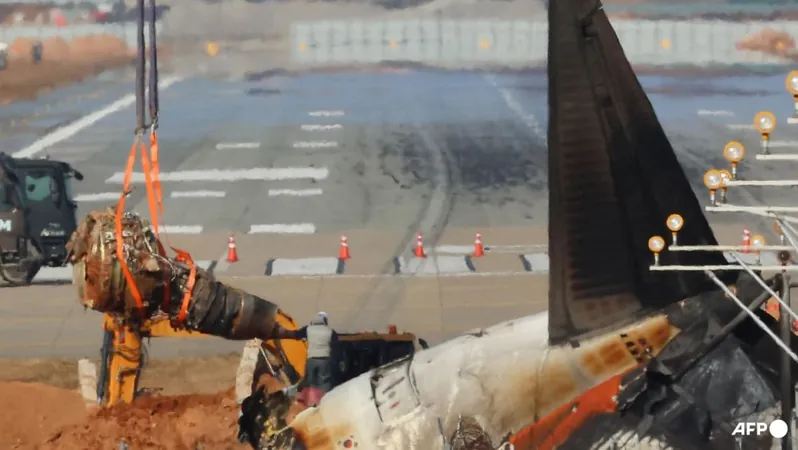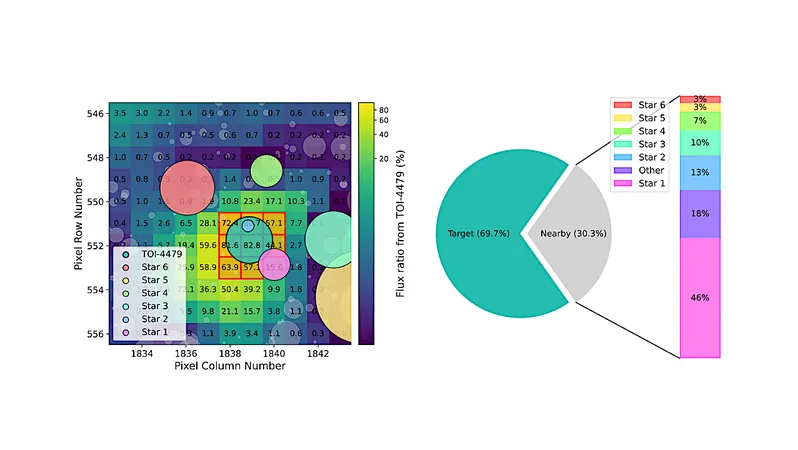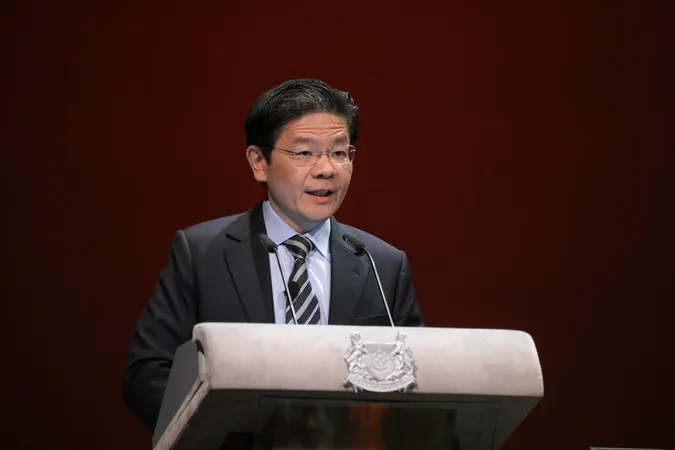
South Korea Initiates Recovery Efforts for Jeju Air Crash Victims
2025-01-03
Author: Arjun
Introduction
In a tragic turn of events, South Korean investigators commenced recovery operations for the wreckage of Jeju Air Flight 2216 on Friday, January 3rd. The flight, arriving from Bangkok to Muan, ended in disaster last weekend, resulting in the loss of 179 lives, with only two survivors among the 181 passengers and crew.
Details of the Crash
The Boeing 737-800 crash occurred during a mayday situation as the aircraft attempted an emergency belly landing, ultimately colliding with a concrete barrier at the end of the runway, igniting a catastrophic fireball. While officials have not determined the precise cause of the crash, investigations are focusing on several potential factors. Preliminary theories include a bird strike, defective landing gear, and issues related to the runway barrier.
Recovery Efforts
Using large cranes, investigators began lifting the remnants of the aircraft, which included critical sections such as the tail and possibly an engine. Na Won-ho, leading the investigation for South Jeolla provincial police, indicated that there may still be human remains within the wreckage, particularly in the tail section.
Victim Identification
The unprecedented devastation of the aircraft has made the recovery of remains a painful and time-consuming process. Despite the challenges, authorities have successfully identified all 179 victims, with some families beginning funeral preparations after receiving their loved ones' remains.
Ongoing Investigation
In a swift response to the disaster, the South Korean police have intensified their investigation by conducting raids on Jeju Air and Muan airport’s operations. They are scrutinizing communications leading up to the crash and examining the runway's localiser, a crucial safety system. Additionally, safety checks are being conducted on all Boeing 737-800 models operated by South Korean airlines.
International Collaboration
International collaboration is also underway, with the US Federal Aviation Administration lending its expertise to the ongoing inquiry. Meanwhile, China’s Civil Aviation Administration has announced a comprehensive review of runway safety across its air traffic systems in light of the incident, emphasizing preventative measures against bird strikes.
Community Response
In the aftermath of this tragedy, the South Korean community has rallied together, extending support to the grieving families. A national mourning period was established, drawing heartfelt contributions from citizens and celebrities alike. J-Hope, a member of K-pop sensation BTS, made a notable donation of 100 million won (approximately US$68,000) to assist the victims' families. Acts of kindness have poured in throughout the country, including prepaid coffees at the airport for families visiting the crash site and meal preparations by renowned chefs.
Conclusion
As the investigation continues, the nation remains united in remembrance of those lost and in support of their families during this trying time. The journey to uncover the truth behind this disaster may take months or even years, but the commitment to accountability and safety in aviation remains steadfast.






 Brasil (PT)
Brasil (PT)
 Canada (EN)
Canada (EN)
 Chile (ES)
Chile (ES)
 Česko (CS)
Česko (CS)
 대한민국 (KO)
대한민국 (KO)
 España (ES)
España (ES)
 France (FR)
France (FR)
 Hong Kong (EN)
Hong Kong (EN)
 Italia (IT)
Italia (IT)
 日本 (JA)
日本 (JA)
 Magyarország (HU)
Magyarország (HU)
 Norge (NO)
Norge (NO)
 Polska (PL)
Polska (PL)
 Schweiz (DE)
Schweiz (DE)
 Singapore (EN)
Singapore (EN)
 Sverige (SV)
Sverige (SV)
 Suomi (FI)
Suomi (FI)
 Türkiye (TR)
Türkiye (TR)
 الإمارات العربية المتحدة (AR)
الإمارات العربية المتحدة (AR)